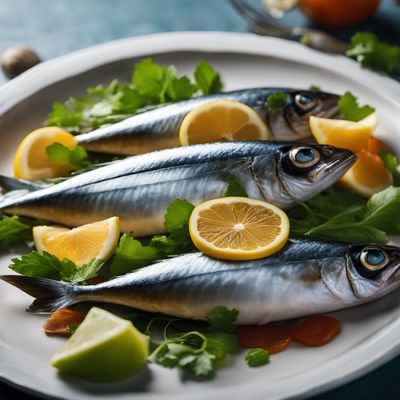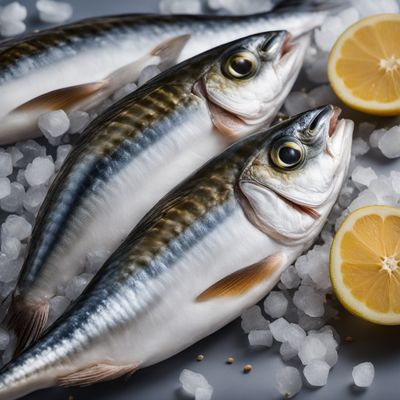
Ingredient
Mackerel, chub
The Mighty Mackerel
Mackerel is a medium-sized fish with a streamlined body, silver skin, and dark blue-green back. It has a firm, oily flesh that is packed with omega-3 fatty acids, giving it a distinct flavor and a moist, succulent texture. Whether grilled, smoked, or pickled, mackerel adds a delightful depth of flavor to a variety of dishes.
Origins and history
Mackerel has a long history of being consumed by humans, dating back to ancient times. It is native to the North Atlantic and Mediterranean Sea but is now found in many other parts of the world. Mackerel has been an important food source for coastal communities and has played a significant role in the culinary traditions of countries like Japan, Norway, and Portugal.
Nutritional information
Mackerel is a nutritional powerhouse, packed with omega-3 fatty acids, vitamin D, vitamin B12, and selenium. It is also a good source of protein and contains essential minerals like potassium and magnesium.
Allergens
Mackerel is known to cause allergies in some individuals, particularly those with fish allergies. It is important to exercise caution and consult a healthcare professional if you have any known allergies or sensitivities.
How to select
When selecting mackerel, look for fish with bright, clear eyes, shiny skin, and a fresh, oceanic smell. The flesh should be firm and spring back when pressed. Avoid fish with dull eyes, discolored skin, or a strong fishy odor.
Storage recommendations
To maintain its freshness, store mackerel in the refrigerator at a temperature between 32°F and 38°F (0°C and 3°C). It is best to consume it within 1-2 days of purchase. To extend its shelf life, you can also freeze mackerel for up to 3 months.
How to produce
Mackerel can be commercially fished or caught recreationally. If you are interested in producing mackerel, consult local fishing regulations and consider joining a fishing community or club to learn the necessary skills and techniques.
Preparation tips
Mackerel can be prepared in various ways, including grilling, smoking, baking, or pan-frying. It pairs well with bold flavors like citrus, garlic, and herbs like thyme or rosemary. For a simple and delicious preparation, marinate mackerel in a mixture of olive oil, lemon juice, and herbs, then grill it until cooked through. Serve with a fresh salad or roasted vegetables for a nutritious and satisfying meal.
Substitutions
Sardines or trout can be used as substitutes for mackerel, as they share a similar oily texture and flavor. However, keep in mind that the taste may vary slightly.
Culinary uses
Mackerel is commonly used in dishes such as grilled mackerel fillets, smoked mackerel pâté, mackerel sushi, or pickled mackerel. It is also a popular choice for canning and is often enjoyed in salads, sandwiches, or as a topping for crackers or toast.
Availability
Mackerel is widely available in coastal regions and countries with access to the ocean. It is commonly found in North America, Europe, and Asia, particularly in countries like Japan, Norway, Spain, and Portugal.


